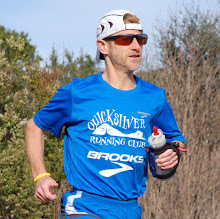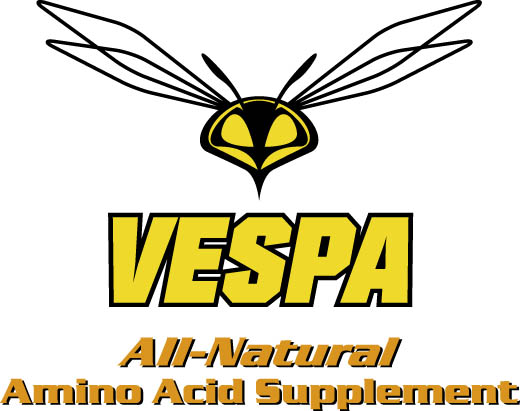 It was Earth Day on Tuesday this week, the perfect occasion to celebrate one of the natural wonders of the US, the Appalachian Trail.
It was Earth Day on Tuesday this week, the perfect occasion to celebrate one of the natural wonders of the US, the Appalachian Trail.I was giving a talk at Informs Practice, an Operations Research conference, in Baltimore, Maryland, last week. The boys were off for Spring break so the whole family made the trip to Washington, D.C., a rare occasion to combine a family and business trip.
I myself took Wednesday off and we headed to West Virginia, a state which we had not visited yet. More precisely to Harpers Ferry, the headquarters of the Appalachian Trail Conservancy (ATC).
I have several connections with ATC and the trail. The first and strongest, Steve Paradis, one of our best friends, who is the Chief Operating Office of ATC and lives in Harpers Ferry. Agnès had known the Paradis family in Andover, Massachusetts, for a long time, from students exchanges when she was a teen, and I got introduced to them shortly after meeting Agnès, in 1989. Here is a short biography of Steve from the ATC website:
Steve has hiked-through the AT and brings a very attractive mix of hiker and industry experience and expertise to the ATC. Knowing Steve so well, it is hard for me to imagine a better officer to lead the 50 staff of ATC and the associated network of 30 clubs, themselves federating the 6,000 volunteers maintaining the Appalachian Trail. Lucky ATC!Steve Paradis, Chief Operating Officer: Steve’s involvement with the A.T. dates back to a southbound thru-hike he completed over the winter of 92-93. Since then, he has volunteered as a corridor monitor and is currently the monitor coordinator for the Dartmouth Outing Club. He served on the ATC Board of Managers, Finance Committee, and Stewardship Council. He served briefly as an officer on the ALDHA board.
Coming to ATC from industry, Steve has held positions in R&D and product development in the paper industry as well as in production and global manufacturing operations with Hewlett-Packard. He earned his B.S. and M.S. in Mechanical Engineering from M.I.T. and holds an M.B.A. from Stanford University.
Another connection is through Flyin' Brian Robinson who was the first person to hike the three cross-US scenic trails within the same year (Appalachian Trail, Pacific Crest Trail, Continental Divide Trail). A feat called Triple Crown, which Brian topped this year by completing and winning the Barkley 100-mile, while setting a course record, at the beginning of the month. Brian was used to live in the Bay Area and I learned a lot from running the hills with him. If you recall my account of my first Western States, we ran the first 32 miles together last year. I rarely see Brian now that he moved to Monterey, but will see him again on the Western States course in two months.
Third, I heard again about AT when Steve asked me what I thought of Karl Meltzer's project to set a new speed record on AT this summer. ATC is a bit concerned with the buzz around this attempt. As Karl is one of my ultra heroes, whom I still have to meet on the trails (see my 2008 wishes), I tried to reassure Steve of Karl's best and positive intentions and genuine interest in trail protection and promotion through our sport.
Last, the trail gets to Georgia in the South, the State of Atlanta, where Dave leaves, one my most diligent readers, and one of my connections with the trail and ultra running community on the East Coast. Dave is a proud member of GUTS, the Georgia Ultrarunning and Trailrunning Society, which I'm sure makes good use of the Appalachian Trail.

The Appalachian Trail
The AT doesn't yet cross all the US (at least the official one, because some claim a longer international version). It goes from Georgia in the South, to Maine in New England. With a length of 2,175 miles it is the longest marked trail in the US and it crosses 14 states overall and 8 National Forests. It took many years to connect all the segments and was established by Congress in 1968, 47 years after Benton MacKaye's original idea in 1921. Although a unit of the National Park Service, its maintenance relies on 30 local clubs and associations gathering 6,000 volunteers along the trail. This amazing work and countless hours are orchestrated by the Appalachian Trail Conservancy, which received a formal delegation from the National Park Service to maintain and protect the trail.
 I only ran 23 miles this time, that is about 1% of the trail. Needless to say, I have not seen much of it. In addition, the weather was perfect: pure blue sky, nice temperature with a light breeze and the trail was in perfect condition, having dried up from the winter season. Yet, there was some sections with a lot of dead leaves and tricky rocks making the run more tiring than what expected, and representing more work than I should have put in 3 days before Ruth Anderson 100K (or 50K...).
I only ran 23 miles this time, that is about 1% of the trail. Needless to say, I have not seen much of it. In addition, the weather was perfect: pure blue sky, nice temperature with a light breeze and the trail was in perfect condition, having dried up from the winter season. Yet, there was some sections with a lot of dead leaves and tricky rocks making the run more tiring than what expected, and representing more work than I should have put in 3 days before Ruth Anderson 100K (or 50K...).Steve is showing me the marking of the trail: 1 white stripe = keep going straight; 2 s announce a turn, with direction to be read bottom-up. Blue stripes indicate an access trail (a trail getting hikers to or off the trail, about 160 miles of them).
 I started my run from Route 40, with this bridge crossing Highway 70, and going South toward Harpers Ferry.
I started my run from Route 40, with this bridge crossing Highway 70, and going South toward Harpers Ferry. And, not carrying a camera, here am I, 23 miles later, getting close to Harpers Ferry where I met Steve and the family along the canal, the only flat section of the day.
And, not carrying a camera, here am I, 23 miles later, getting close to Harpers Ferry where I met Steve and the family along the canal, the only flat section of the day. During these 3 hours, I saw less than 10 people, a few through-hikers with huge backpacks and half a dozen local hikers. Note that, according to Steve, I had run a part of the course of the famous JFK 50-mile, although I can't find a confirmation on the website. I'll surely be back to run more of the AT, and maybe this mythical race on the East Coast. The largest ultra event in the US, with more than 1,000 finishers last year, yet, quite a smaller field than the SaintéLyon I ran last December, in France, with 8,000 participants (including more than 2,500 on the complete 42-miler, a race starting at midnight on a muddy course and freezing temperatures...).
During these 3 hours, I saw less than 10 people, a few through-hikers with huge backpacks and half a dozen local hikers. Note that, according to Steve, I had run a part of the course of the famous JFK 50-mile, although I can't find a confirmation on the website. I'll surely be back to run more of the AT, and maybe this mythical race on the East Coast. The largest ultra event in the US, with more than 1,000 finishers last year, yet, quite a smaller field than the SaintéLyon I ran last December, in France, with 8,000 participants (including more than 2,500 on the complete 42-miler, a race starting at midnight on a muddy course and freezing temperatures...).After a shower and getting the boys and Steve for a canoe tour on the Shenandoah River, I went back to the AT Conservancy headquarters for a visit and the traditional picture that most of the hikers get in front of the building and plaque:
 Inside, there is a room that many AT hikers will recognize: "their" room, with a couch for some rest, pictures and maps following the progress of some hikers and volunteers on the trail, a box of lost-and-founds in which hikers can either leave surplus or get some missing stuff, several artifacts illustrating the trail history and a computer to send and check emails. I takes about 5 millions steps to hike the whole trail and this comfortable and well equipped halt is definitely worth to get re-energized along the way!
Inside, there is a room that many AT hikers will recognize: "their" room, with a couch for some rest, pictures and maps following the progress of some hikers and volunteers on the trail, a box of lost-and-founds in which hikers can either leave surplus or get some missing stuff, several artifacts illustrating the trail history and a computer to send and check emails. I takes about 5 millions steps to hike the whole trail and this comfortable and well equipped halt is definitely worth to get re-energized along the way!
The MEGA-Transect initiative
 Now that you know more about the trail, let's get to the title of this post. As you can see on the above picture, the AT, in red, has a very sizable dimension compared to the size of the North American continent. With 250,000 acres of protected land, and 2,000 occurrences of rare, threatened, endangered, and sensitive plant and animal species
Now that you know more about the trail, let's get to the title of this post. As you can see on the above picture, the AT, in red, has a very sizable dimension compared to the size of the North American continent. With 250,000 acres of protected land, and 2,000 occurrences of rare, threatened, endangered, and sensitive plant and animal speciesThe picture is actually a copy of the cover of a very interesting report presenting this global initiative.
How mega is this sensor? I'm not very good with square yards, this is really not metric at all... So here are the detailed maths to give you an idea:
- According to the NFL, a football field is 120 by 53 1/3 yards = 6,400 square yards
- One acre = 4,840 square yards
- 250,000 x 4,840 / 6,400 = 189,062
The MEGA-Transect project aims at three goals:
- Monitor – Collect and analyze new and existing data on key indicators of environmental health from agencies, organizations, researchers, and citizen scientists.
- Understand – Transform data into status reports and track trends through analysis, synthesis, and modeling.
- Inform and Engage – Inform and engage the American public, decision-makers and stakeholder organizations to manage and protect the A.T. environment, attain the goals of existing natural resources and environmental legislation, and to make sound decisions for positive change.
Here are some of the captivating facets of the MEGA-Transect project highlighted in the report:
- Citizen Science
- Forest Health
- Invasive Plants
- Rare, Threatened and Endangered Species
- Mountain Birds
- Seasonal Life Cycles
- Landscapes
- Water
- Air Quality
- Visitor Impacts
Farther and faster, the sustainable way...






















.jpg)














.jpg )
